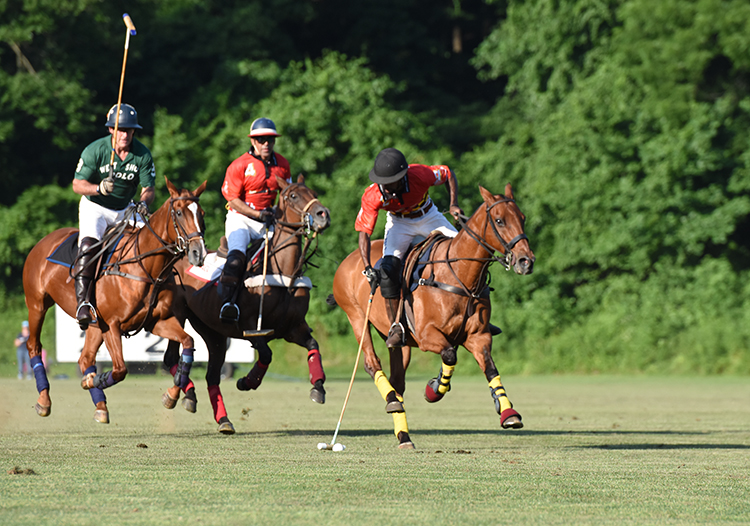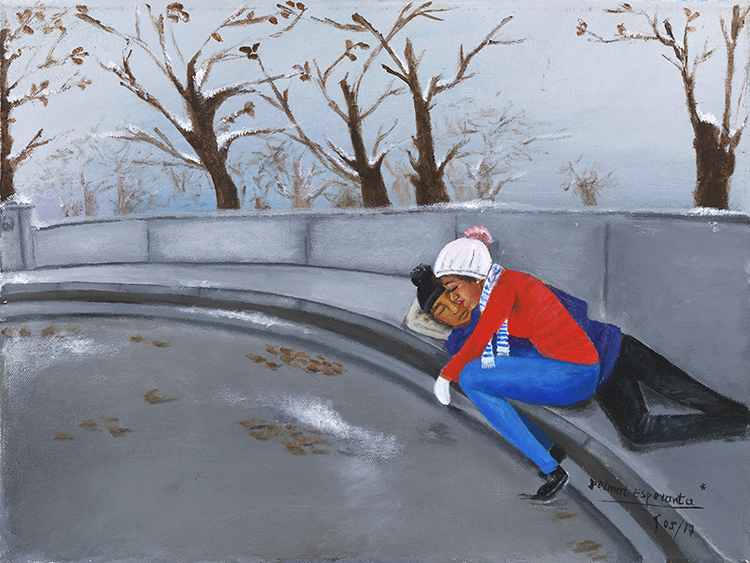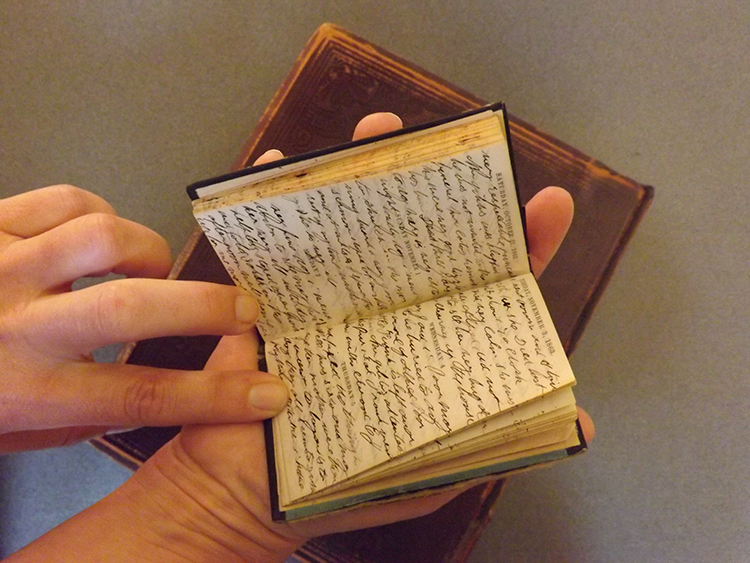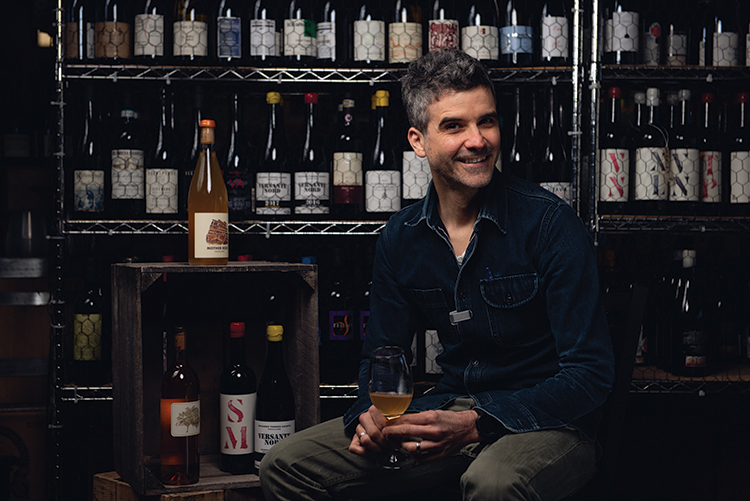By Claire Marie Porter
Every kid deserves food, water, shelter and a pony,” reads one of many slogans at the Chamounix Equestrian Center. Tucked into the North Philadelphia Strawberry Mansion neighborhood, low-income youth have the opportunity to experience English-style horseback riding through a long-term equine sports program called Work to Ride.
On a bright fall morning, mounted teenagers in jodhpurs move across the grounds. More-experienced riders sit upright with ease; the less confident look flimsy in the saddle. Here, unmistakable snorts and whinnies and the sound of polo mallets connecting with wooden balls stand in contrast to the city’s traffic.
The entrance to the stables is hard to find.
A small path winds through bowing sunflowers, and overgrown butterfly bushes spill into the walkway. Inside the barn, retired racehorses line both sides of the corridor, reaching out their massive heads to nudge visitors with their muzzles.
The 35-stall barn was formerly McCarthy Stables, home of the mounted police force of Philadelphia. Now it’s a humble barn on a sycamore-lined dead-end street dedicated to employing and occupying underprivileged youth.
It’s a quiet place for so significant a history.
Lezlie Hiner founded Work to Ride in 1994 as a nonprofit program to get the at-risk kids of Philadelphia off the streets and into the barn—a safer place. Initially leased to her for $1 a year by the Fairmount Park Commission, it’s now a nonprofit run by donation and patrons, including polo legend and Ralph Lauren model Nacho Figueras, who “adopted” WTR in 2010.
Retired racehorses were donated to the program, allowing Hiner to offer a variety of horse sports including polo. To enroll, the applicants had to write an essay. To ride, the kids had to do barn chores and keep up their school grades. They were taught proper English-style riding, and two years later, in 1996, Hiner introduced them to polo: the “sport of kings.”
Hiner is a busy woman, and her phone, which often goes automatically to voicemail, says she’s “probably out with the horses.” I find her, covered in dust and paint, at the south end of the stables. She leads me to her office telling me that she stopped using her email awhile ago. Too much spam, she says.
Unsurprisingly, Hiner’s team came as a shock to polo’s traditional world of upper-class elites.
“My kids from the ghetto just aren’t going to act the same way as the kids from the Main Line,” says Hiner.
And neither is she. I look around her cluttered office, which teems with cats and rough-looking mutts—all strays she’s picked up. A black cat with crossed eyes and its tongue hanging out clambers onto my lap.
“That’s Dark Vader. He drools a lot,” laughs Hiner, her weathered face pulling into a smile. Her desk and office corners are piled with horsey kitsch—ceramic horse statues and trophies with triumphant-looking horse toppers. Her office walls are covered with medals, multicolored ribbons, polo mallets, news clippings and pictures of her students.
What I already know about polo, and what most Americans know about polo, is that it’s associated with royalty and wealth. It’s also one of the oldest known sports, though it began as a war game, and the stereotypes run deep. It certainly doesn’t conjure up images of poor black kids from Philadelphia. It requires time, money, a horse—privilege.
“We’re kind of an oxymoron,” says Hiner.
Now, the slogan makes perfect sense—these kids deserve ponies just as much as, if not more than, anyone else.
The road to polo is one of dedication and practice.
“I don’t just throw a kid onto a horse and give them a mallet,” says Hiner.
It begins with English-style riding, and a good “hunt seat,” she says, referring to a form of English riding based on the tradition of fox hunting.
Hiner teaches polo, and a trainer named Lisa Arnold teaches English riding.
Another Work to Ride slogan is wryly self-aware: “Polo: noun, a sport for royalty, millionaires and homeboys.”
One of the program’s homeboys includes Daymar Rosser, who led his team to win the U.S. Polo Association National Championship in 2011.
It was the first all-black team to do so.
Rosser was five years old in 1999 when his older brother threw him on a horse and whipped it to run. His two older brothers had discovered the Equestrian Center earlier that year when wandering around Fairmount Park. His brothers had started riding under the instruction of Hiner—Jabarr was known as “Killer Bee,” and Kareem, “The Pelé of Polo.”
Before this moment of exposure, Rosser didn’t even know what a horse looked like.
“That’s how you learn to ride though,” he laughs.
The first time I see Rosser, he is walking down the stable’s corridor, bouncing a foot mallet against his leg. He is about 5 feet, 10 inches and nimble, wearing a kind smile. He laughs easily and almost immediately invites me to go riding with him sometime.
Now at 24-years-old, he’s the barn manager. His day begins at 7 a.m., and it usually ends with a horse ride through Fairmount Park. He now cares for many of the horses he once rode in the arena. Cholo is his favorite polo pony, though he’s too old to ride now. As we sit at a table next to the arena at Chamounix, an orange tabby cat jumps onto his lap.
The stereotypes of polo aren’t beyond Rosser.
“Being black in a game for white people, by white people … it’s pretty crazy,” he says, describing the crowds as mostly “people wearing big hats and drinking Champagne.”
Rosser says there comes a point when you don’t even think about the horse anymore—it becomes an extension of your body. I picture a centaur, the half-human, half-horse mythological creature. If ever a sport was played by the gods, it would be polo.
Every great athlete has a signature style.
“I’m a scrapper,” says Rosser.
He’s known in the arena for being quick and “handy” with his mallet. He always played the No. 1 position.
“Like the receiver,” he says, comparing his position to a football player’s.
“No. 2 is offense and defense, 3 is like a running back,” he continues.
Most polo players own a horse. The players on Rosser’s team, which included his older brother Kareem and friend Brandon, did not. They had a lot less practice than a typical polo player.
“For us, the games were our practices,” he says. “It only takes me about five minutes to get to know a horse, though.”
Without the proper equipment and only limited access to the horses at Chamounix, Rosser and his teammates found other ways to prepare for matches. “Horse
tag” was one.
Rosser rolls up his pant leg to reveal a horseshoe-shaped scar below his knee. He gestures to the field across the road, where, when he was 12 or 13 years old, he says, his friend’s horse Genie kicked him. They were playing tag on “fresh” horses in the wintertime. He needed 62 stitches and took about four months to recover.
All great polo players get a mallet designed for them, usually made of bamboo. Rosser stands up and demonstrates holding the reins with his left hand and swinging the mallet with his right.
“This is a nearside shot, an offside shot … ” he says.
In the stable, Rosser takes Teracita out of her stall, remarking on her beauty as he does. She is a shining chestnut-colored polo pony with a short cropped mane and unwrapped tail. Polo ponies are often taller and fitter than regular horses, he says.
Rosser receives his publicity casually. Ralph Lauren is coming to the stables in a few weeks to do a second photo shoot with WTR. Rosser laughs, recalling how he used to think polo was just the name of a shirt.
“I just hope we get to keep the clothes,” he says.
Rosser recently graduated from Roger Williams University in Rhode Island, where he played polo and studied communications. Now he’s taking a break from polo, working in the barn and completing an internship while looking for a way to use his degree.
“My whole life has been polo, polo, polo,” Rosser says.
Now he’s ready for something normal. His dream is to live in Boston and earn enough money to have a small farm where he can play polo after work, just for fun.
I arrive for my first English-riding lesson on a Sunday afternoon. In the riding ring, a little girl, probably 6 or 7 years old, flops around on the back of a gray-flecked horse. As the trainer walks backward, the horse follows her—their steps in sync. The trainer wears muddied boots, a red cap, tan jodhpurs and a black T-shirt. She grabs the reins and jogs alongside the student, who flounces in her saddle. “Heels down, toes up!” the trainer yells.
I walk to the whiteboard at the south end of the stables. I’ve been matched with a horse named Karusel, whose neighbors include Squidworth and Easy Ed—names from past lives as racehorses.
Two young girls in Work to Ride T-shirts are chatting as they organize equipment. They ask if it’s my first time and show me the tacking area and the three different brushes I need to groom Karusel: the curry comb, hard brush and the soft brush.
I get started, feeling like a city girl more than ever. Arnold peeks into the stall.
“I’m Lisa,” she says.
Arnold has a soft, even voice and a serious presence.
“Did you use the curry?” she asks.
I nod.
She reaches under the front of the mare and smooths her hand over its chest.
“This is the most important spot. There’s still some dirt here,” she says.
I slip the curry back on my hand and rub vigorous circles. Any remnant of dirt or dust under a saddle can cause permanent damage. She points to a small white kidney-shaped spot—damaged tissue.
“That’s never going away,” Arnold says.
We groom the horse together, talking over its withers, the highest part of a horse’s back.
“I started riding as an adult,” she says. “English style. I love horses more than anything.”
She hands me the bridle. Karusel leans into it, and I place it gently over the ears. Arnold is working toward “eventing,” she says. She has studied with some of the best, and she names a slew of trainers she has worked with. I nod, though I have no idea who these people are. By the way she says the names, I know I should be impressed.
She practices on the horses after her lessons are done for the day. She has never owned a horse.
“Owning a horse is terrifying,” she says. Too many things can go wrong. Even a small oversight in hoof care could be deadly for a horse.
When Karusel, a bay-colored Anglo Arab horse, is tacked, I hold the reins on her left, and Arnold leads me to the ring.
She helps me mount, then walks backward in front of me, Karusel in sync with her footsteps.
“A walk has four beats, one for each individual foot. The trot is two,” she tells me. “The canter is three beats, and the gallop is four beats.”
The mare nudges her and snorts.
“Now we’ll trot,” she says. I think of the flouncing child. “I think you’re ready.”
Arnold’s brown eyes indicate a deep knowledge of people and horses.
She demonstrates the position I need to be in for the two-point trot: Up on the toes, off the seat an inch, upright posture.
“In English riding,” she says, “it’s all about the body.”
“Grab onto her mane and lift,” Arnold says, giving the horse a tap on its hindquarters. “Now bounce.”
After the lesson, we lead Karusel back to the stables. “Do the horses get bored when they have a beginner?” I ask. “Are they ever like, ‘I just wanna run?’ ”
“All the horses like different things. Karusel loves to jump… and so do I,” she says.








